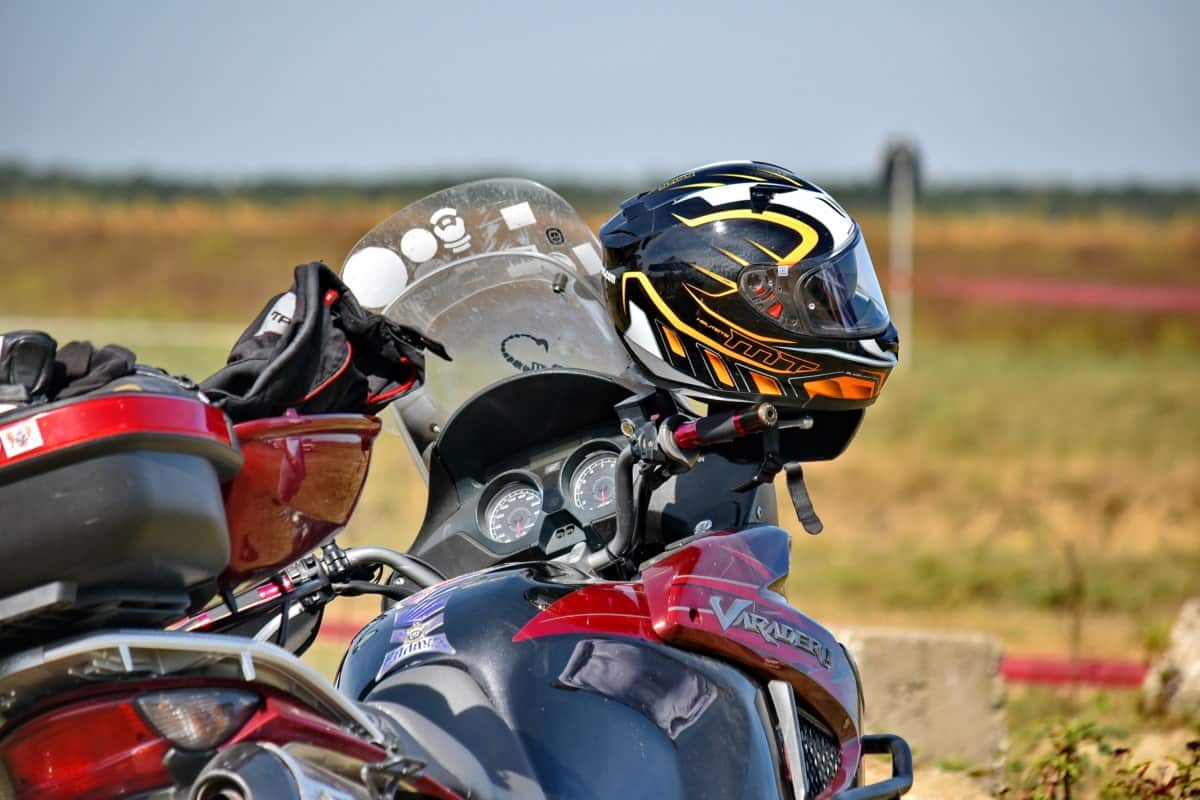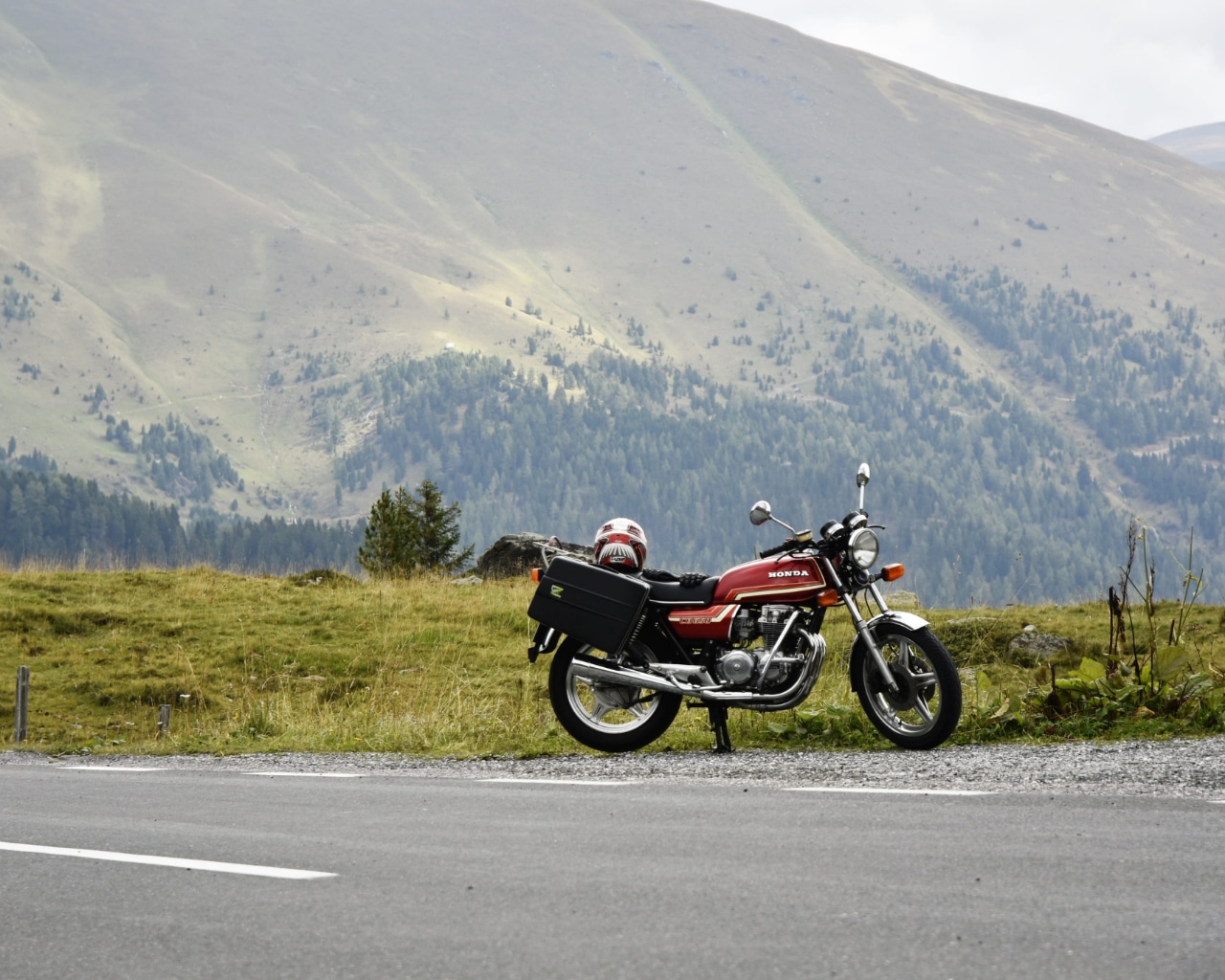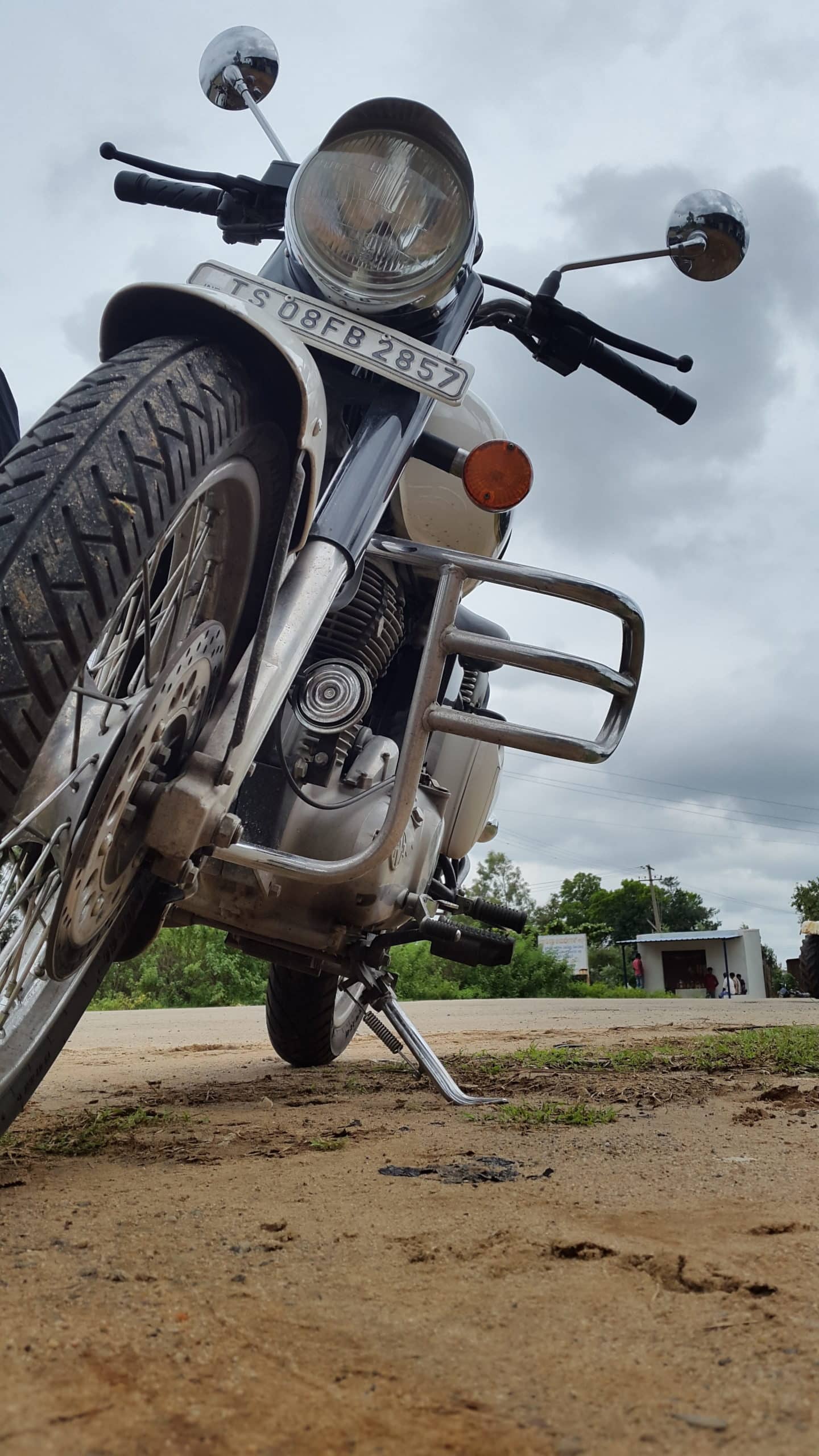What Motorcycle Should I Get – Introduction
Choosing the right motorcycle is an important decision that requires careful consideration. With so many options available in the market, it can be overwhelming to determine which type of motorcycle is best suited for you. In this guide, we will explore the factors to consider when deciding on the type of motorcycle that is right for you.
Understanding the importance of tailoring your motorcycle choice
Every rider has unique needs and preferences, and it is crucial to find a motorcycle that aligns with your specific requirements. Here are some key factors to consider when making your decision:
Factors to consider when choosing a motorcycle
1. Riding Experience: Your level of riding experience will play a significant role in determining the type of motorcycle that is suitable for you. Beginners may benefit from starting with a smaller, easier-to-handle bike, while experienced riders may prefer more powerful and advanced models.
- Intended Use: Consider how you plan to use the motorcycle. Are you looking for a bike for daily commuting, long-distance touring, or off-road adventures? Different motorcycles are designed for specific purposes, so it’s important to choose one that best suits your intended use.
- Budget: Determine your budget and stick to it. Motorcycles can vary greatly in price, and it’s essential to consider not just the initial cost but also ongoing expenses such as insurance, maintenance, and fuel.
- Physical Fit: Ensure that the motorcycle you choose is a good fit for your body type and size. Comfort is key when it comes to enjoying your ride, so test out different models to find one that provides a comfortable riding position.
- Style and Aesthetics: Motorcycles come in various styles and designs, ranging from cruisers and sport bikes to adventure and touring bikes. Consider your personal style and preferences when selecting a motorcycle that reflects your taste.
- Maintenance and Ownership: Research the maintenance requirements and costs associated with owning the motorcycle you are considering. Some bikes may require more frequent servicing or have higher maintenance costs than others.
- Safety Features: Look for motorcycles that offer advanced safety features such as anti-lock braking systems (ABS) and traction control. These features can enhance your safety on the road.
- Test Rides: Before making a final decision, take the motorcycles you are interested in for a test ride. This will give you a feel for how the bike handles and whether it is a good fit for you.
By considering these factors and taking the time to research and test different motorcycles, you can find the one that best suits your riding style and preferences. Remember, choosing the right motorcycle is an investment in your riding satisfaction and safety.
Beginner-Friendly Options
Types of motorcycles suitable for beginners
When it comes to choosing a motorcycle as a beginner, there are a few types that are considered to be more beginner-friendly. These include:
- Standard bikes: Standard bikes are versatile and easy to handle, making them a popular choice for beginners.
- Scooters: Scooters are known for their ease of use and low seat height, making them a great option for beginners looking for a comfortable and manageable ride.
- Entry-level cruisers: Cruisers like the Harley-Davidson Sportster Super Low and Honda Rebel 300 offer a gentle introduction to riding with their approachable design and comfortable seating position.
Choosing a motorcycle with a low seat height and manageable power
When selecting a motorcycle as a beginner, it’s important to consider factors such as seat height and power. A lower seat height allows for easier maneuverability and increased comfort, especially for riders with shorter inseams. Additionally, opting for a bike with manageable power ensures that you can build your confidence and skills gradually without feeling overwhelmed.
Comparing different motorcycles based on specific factors:
| Motorcycle Model | Seat Height | Power |
|---|---|---|
| Standard Bike | Low | Moderate |
| Scooter | Low | Low |
| Entry-level Cruiser | Low | Moderate |
By considering the seat height and power level of different motorcycles, you can narrow down your options and find a bike that provides a comfortable and accessible riding experience for beginners.
Remember, starting your motorcycle journey with confidence is key, and having a secure home for your bike when it’s not in use adds an extra layer of peace of mind. Invest in a reliable motorcycle lock or consider storing your bike in a secure garage to ensure its safety.
Frequently Asked Questions
What kind of motorcycle is easiest to ride for beginners?
Beginner motorcycles like cruising bikes such as the Harley-Davidson Sportster Super Low and Honda Rebel 300 provide a gentle introduction with their approachable design. If city riding appeals to you, consider dual-sport motorcycles which blend agility and power.
With these tips and knowledge on beginner-friendly motorcycles, you can make an informed decision and start your motorcycle journey on the right foot. Always prioritize safety, comfort, and your personal preferences when choosing a motorcycle. Happy riding!
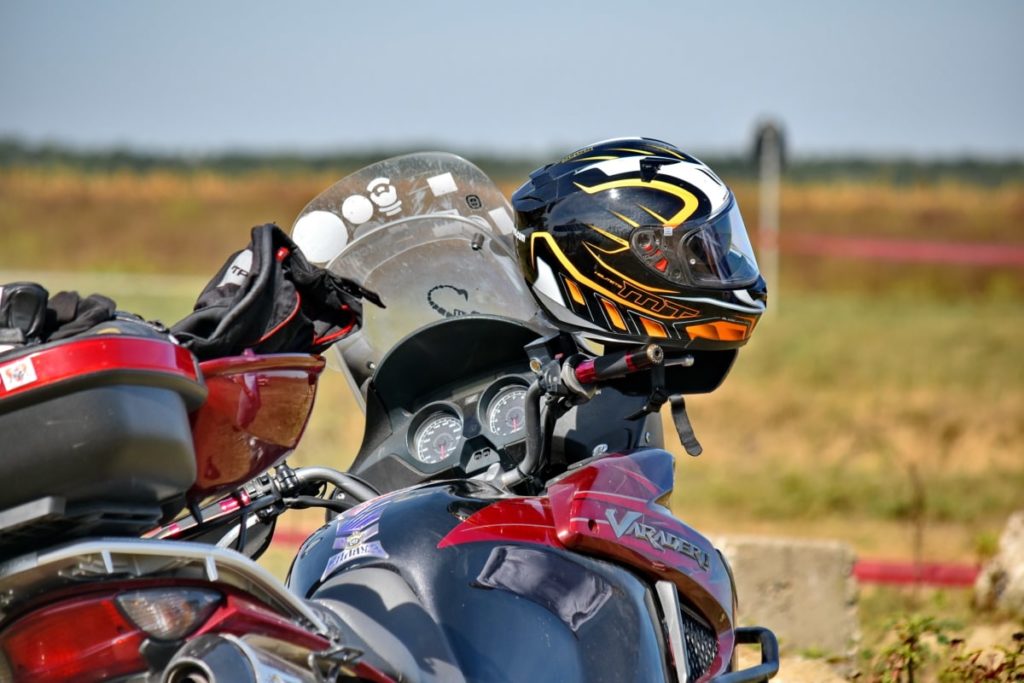
Choosing the Right Type of Motorcycle for You
Sport Bikes
Sport bikes are a popular choice for riders who want high-speed rides. These motorcycles are designed for speed, agility, and performance. Here are some features and characteristics of sport bikes:
- Sleek and aerodynamic design
- Powerful engines with high horsepower
- Lightweight construction for better maneuverability
- Aggressive riding position with forward-leaning posture
- Sporty suspension for enhanced handling
Determining if a sport bike suits your riding needs and preferences
When deciding if a sport bike is the right choice for you, consider the following factors:
- Performance: If you enjoy high-speed riding and adrenaline-pumping acceleration, a sport bike is a great fit. These motorcycles excel in straight-line speed and quick cornering.
- Riding style: The aggressive riding position of sport bikes may not suit everyone. Riders who prefer a more relaxed and upright riding posture may find other types of motorcycles more comfortable.
- Experience level: Sport bikes can be powerful and require skilled handling. It’s important to have experience in riding motorcycles before choosing a sport bike as your first bike.
- Intended use: If you plan on primarily riding on highways or open roads, a sport bike can provide an exhilarating experience. However, if you anticipate riding in traffic or on rough terrain, other types of motorcycles may be more suitable.
Consider these factors and your personal preferences when deciding if a sport bike is the right choice for you. Whether you opt for a sport bike, dual-sport bike, or touring bike, prioritize safety and ensure that the motorcycle you choose aligns with your riding skill level and intended use.
Choosing the Right Type of Motorcycle for You
Sport Bikes
Sport bikes are a popular choice for riders who want high-speed rides. These motorcycles are designed for speed, agility, and performance. Here are some features and characteristics of sport bikes:
- Sleek and aerodynamic design
- Powerful engines with high horsepower
- Lightweight construction for better maneuverability
- Aggressive riding position with forward-leaning posture
- Sporty suspension for enhanced handling
Determining if a sport bike suits your riding needs and preferences
When deciding if a sport bike is the right choice for you, consider the following factors:
- Performance: If you enjoy high-speed riding and adrenaline-pumping acceleration, a sport bike is a great fit. These motorcycles excel in straight-line speed and quick cornering.
- Riding style: The aggressive riding position of sport bikes may not suit everyone. Riders who prefer a more relaxed and upright riding posture may find other types of motorcycles more comfortable.
- Experience level: Sport bikes can be powerful and require skilled handling. It’s important to have experience in riding motorcycles before choosing a sport bike as your first bike.
- Intended use: If you plan on primarily riding on highways or open roads, a sport bike can provide an exhilarating experience. However, if you anticipate riding in traffic or on rough terrain, other types of motorcycles may be more suitable.
Consider these factors and your personal preferences when deciding if a sport bike is the right choice for you. Whether you opt for a sport bike, dual-sport bike, or touring bike, prioritize safety and ensure that the motorcycle you choose aligns with your riding skill level and intended use.
Cruisers
Exploring the appeal of cruiser motorcycles
Cruiser motorcycles stand out from the rest in several ways. They have a unique appeal that attracts riders who prefer a more relaxed and laid-back riding experience. Here are some aspects that make cruisers appealing:
- Comfortable riding position with feet-forward footpegs and a relaxed posture
- Stylish and iconic design, often associated with a classic American look
- Heavyweight construction for stability and a smooth ride
- Powerful engines with a focus on low-end torque for easy cruising
- Longer wheelbase for enhanced stability on straight roads
Considering comfort and riding style when choosing a cruiser
When deciding if a cruiser motorcycle is the right choice for you, think about the following factors:
- Comfort: If you prioritize comfort and enjoy a relaxed riding position, cruisers offer a comfortable and laid-back ride.
- Style: Cruiser motorcycles often have a unique design that is influenced by classic American motorcycles. If you appreciate the aesthetic and want to make a style statement on the road, a cruiser may be the right choice.
- Riding preferences: Cruisers are ideal for long, leisurely rides on open roads. If you plan on taking road trips and enjoying the journey rather than just the destination, a cruiser can provide a smooth and enjoyable ride.
- Handling: While cruisers excel on straight roads, they may not be as agile in tight corners due to their heavyweight construction. If you prefer a bike that can easily maneuver through turns, other types of motorcycles might be more suitable.
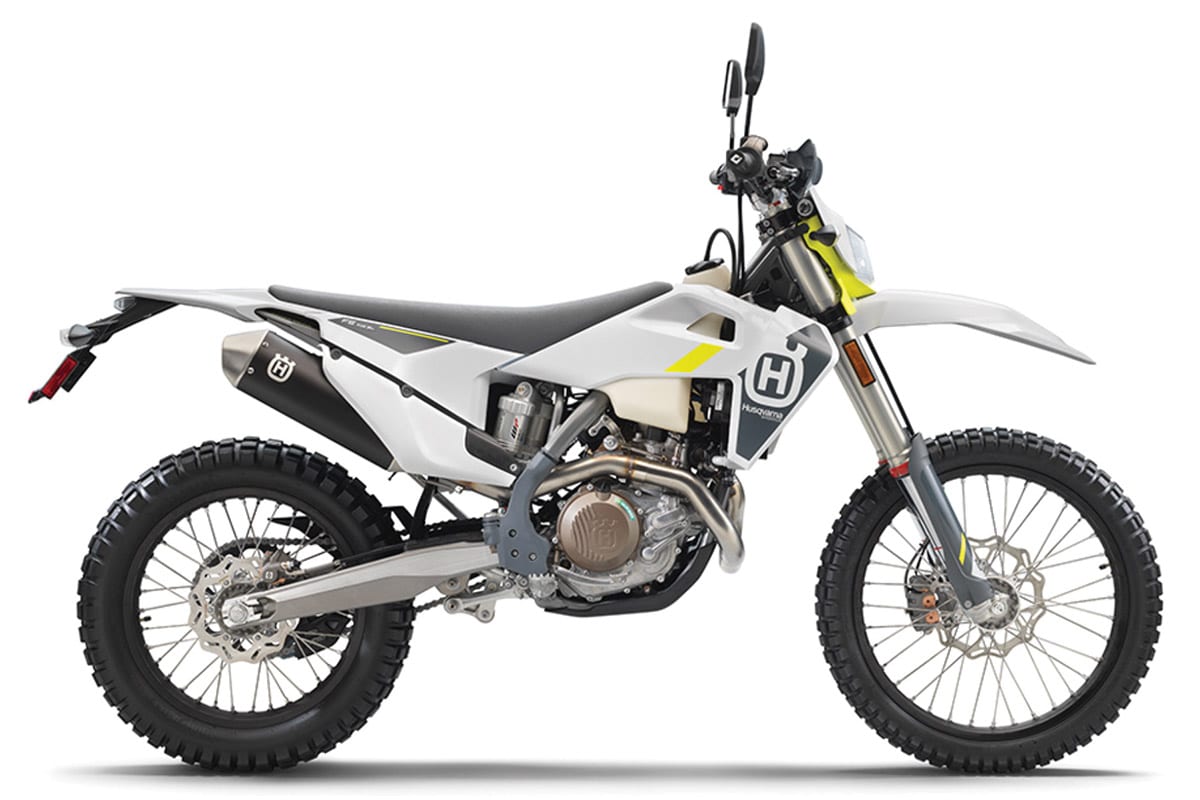
Dual-Sport Bikes
Versatility and off-road capabilities of dual-sport motorcycles
Dual-sport bikes are a versatile option for riders who want to explore both on and off-road terrains. These motorcycles combine the best features of dirt and adventure bikes, making them suitable for various riding conditions. Here are some key characteristics of dual-sport bikes:
- Hybrid design: Dual-sport bikes are a combination of dirt bikes and adventure motorcycles. They offer the off-road capabilities of a dirt bike while providing the comfort and features of an adventure bike.
- Long-travel suspension: All dual-sport bikes come equipped with long-travel suspension, allowing them to handle more technical terrains. This feature provides better control and stability when riding on uneven surfaces.
- Off-road performance: The lightweight construction and nimble handling of dual-sport bikes make them perfect for off-road adventures. These motorcycles can tackle challenging trails and conquer obstacles with ease.
- On-road capability: Dual-sport bikes are also suitable for highway riding. With upgraded suspension and some soft luggage, they can serve as travel motorcycles for longer distances.
Deciding if a dual-sport bike aligns with your riding needs
When considering a dual-sport bike, it’s important to assess whether it suits your riding preferences and requirements. Here are some factors to consider:
- Riding terrain: If you enjoy exploring both on and off-road terrains, a dual-sport bike offers the versatility you need. These motorcycles can handle various riding conditions, allowing you to have different experiences.
- Comfort and riding position: Dual-sport bikes provide a balance between off-road capability and on-road comfort. However, the riding position may not be as relaxed as that of a cruiser. Consider your preference for riding posture before making a decision.
- Experience level: Dual-sport bikes can be suitable for beginners, especially the lighter “enduro” style models. However, if you’re new to motorcycling, it’s important to gain some experience before tackling more technical off-road terrains.
- Intended use: If you anticipate spending more time on paved roads with occasional off-road adventures, a dual-sport bike is a great choice. However, if your primary focus is either purely off-road or solely on-road riding, other types of motorcycles may be more suitable.
Consider these factors and your personal preferences when deciding if a dual-sport bike is the right choice for you. Whether you opt for a sport bike, cruiser, or touring bike, make sure to prioritize safety and choose a motorcycle that aligns with your riding skill level and intended use.
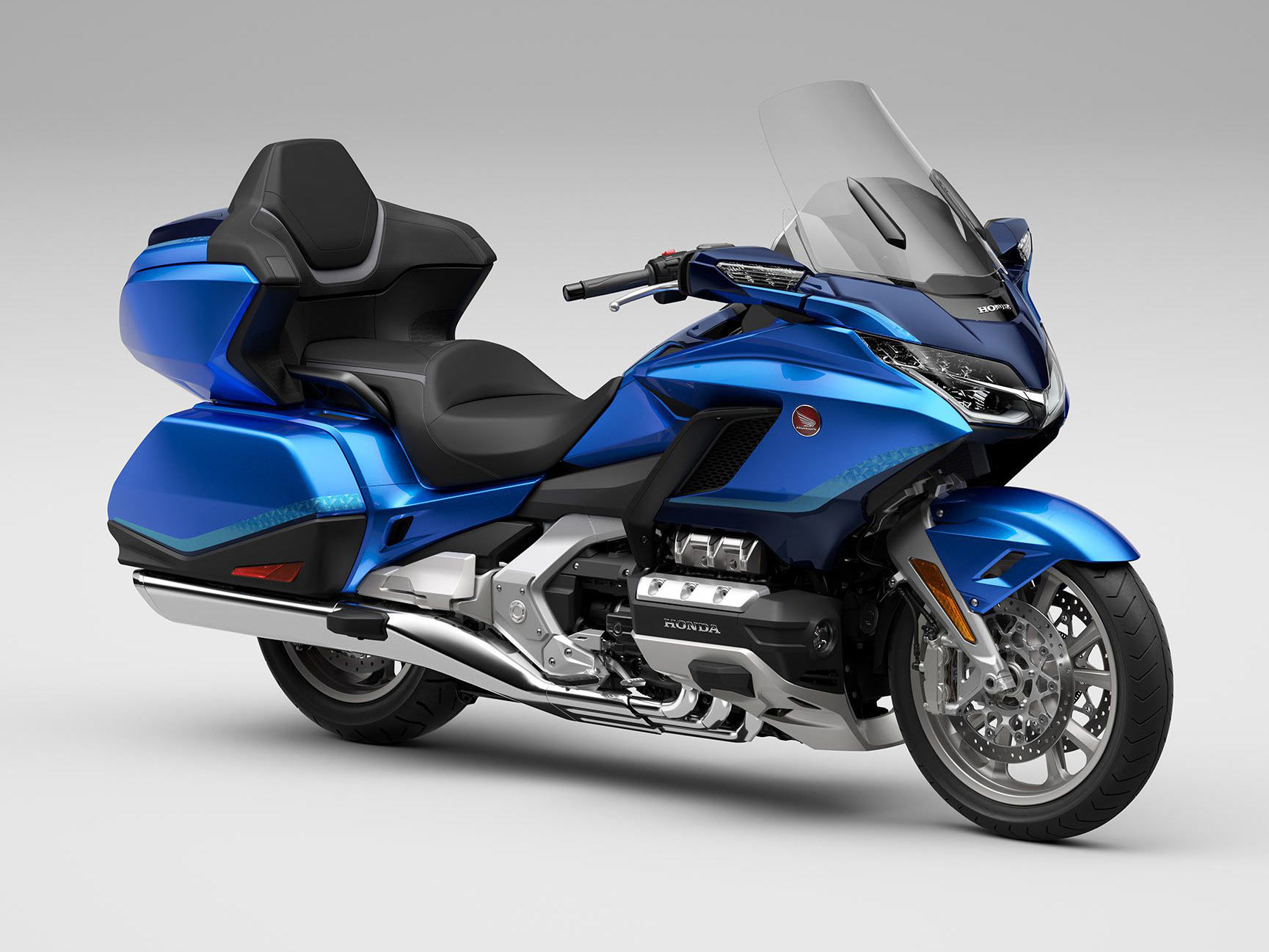
Touring Bikes
Features of touring motorcycles for long-distance trips
Touring bikes are designed specifically for long-distance travel, offering a balance of comfort, performance, and versatility. Here are some key features of touring motorcycles:
- Comfortable seating position: Touring bikes prioritize rider and passenger comfort with an upright seating position, spacious seats, and adjustable ergonomics. This allows for extended periods of riding without fatigue.
- Large storage capacity: These motorcycles typically come equipped with multiple storage compartments, including saddlebags and a top case, providing ample space to carry luggage and essentials for long trips.
- Wind protection: Touring bikes often have a fairing and windshield to deflect wind and reduce fatigue caused by long hours of highway riding.
- Advanced electronics: Touring motorcycles are equipped with advanced electronics such as navigation systems, Bluetooth connectivity, and cruise control, enhancing the overall riding experience.
- Smooth power delivery: Touring bikes have a larger engine displacement, typically between 900cc and 1800cc, providing ample power for long-distance rides while maintaining smooth and controlled acceleration.
Factors to consider when selecting a touring bike
When choosing a touring bike that suits your needs, there are several factors to consider:
- Distance and frequency of travel: Determine the average distance you plan to travel and how frequently you will be embarking on long rides. This will help you choose a touring bike with the appropriate level of comfort, storage capacity, and fuel efficiency.
- Solo or two-up riding: Consider whether you will primarily be riding alone or with a passenger. Touring bikes with comfortable passenger accommodations and additional storage options are ideal for two-up riding.
- Price range: Set a budget for your touring bike and research models that fit within that range. Consider the overall cost of ownership, including maintenance and insurance, when making your decision.
- Test rides: Whenever possible, test ride different touring bikes to get a feel for their handling, comfort, and overall performance. This will help you determine which bike suits your riding style and preferences.
- Brand preference: Research different motorcycle brands and their reputation for producing reliable and high-quality touring bikes. Choose a brand that aligns with your preferences and offers the features you desire.
By considering these factors and weighing your personal preferences, you can select a touring bike that matches your vision of the ideal long-distance motorcycle experience. Remember to prioritize safety and consult with experts or experienced riders for additional guidance.
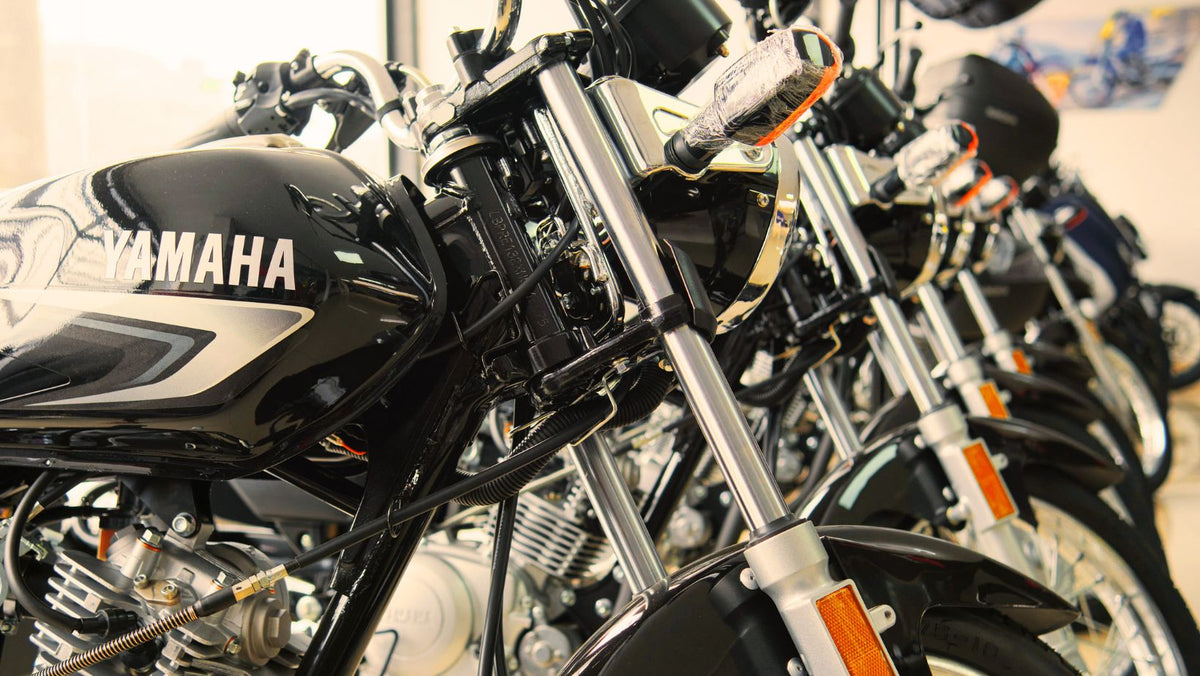
Naked Bikes
Understanding the characteristics of naked motorcycles
Naked bikes, also known as streetfighters, are motorcycles that lack fairings, the sleek panels that cover the front and sides. These bikes offer a more minimalist and stripped-down design compared to sport bikes. Here are some key characteristics of naked motorcycles:
- Aggressive and upright riding position: Naked bikes typically feature a forward-leaning riding position that offers a mix of sportiness and comfort. This positioning allows riders to have better control and agility while still being comfortable during longer rides.
- Lightweight and nimble: Naked bikes are known for their lightweight construction, which results in improved maneuverability and handling. They are more agile in tight corners and can navigate through traffic with ease, making them suitable for city riding.
- Exposed engine and mechanical components: One of the distinguishing features of naked bikes is the visibility of the engine and other mechanical components. This gives these motorcycles a raw and rugged aesthetic appeal.
- Versatility in riding styles: Naked bikes are versatile and can be enjoyed in various riding scenarios. They are suitable for both spirited rides on twisty roads and for daily commuting. Their flexibility makes them popular among riders who appreciate a wide range of riding experiences.
Determining if a naked bike suits your riding style
Deciding whether a naked bike is right for you depends on your preferred riding style and personal preferences. Consider the following factors when determining if a naked bike suits you:
- Riding comfort: Naked bikes offer a more upright riding position compared to sport bikes, which can be more comfortable for some riders, especially those with back pain or difficulty maintaining balance.
- Long-distance riding: If you enjoy embarking on long road trips or frequently commute on highways, a naked bike may not provide the same wind protection as a sport bike or touring motorcycle. However, there are options available with added wind deflectors or windscreens that can improve comfort on longer rides.
- City commuting and maneuverability: Naked bikes excel in urban environments, providing nimble handling and easy maneuverability. If you primarily ride in the city or deal with heavy traffic, a naked bike can be a practical choice.
- Aesthetics and personal preference: Naked bikes have a distinctive look that appeals to riders who prefer a more minimalist and exposed design. If you appreciate the raw and aggressive appearance of a naked bike, it may be the style that resonates with you.
By considering these factors and evaluating your riding preferences, you can determine if a naked bike aligns with your needs. It’s always recommended to test ride different motorcycles and consult with experts or experienced riders to make an informed decision.
Adventure Bikes
Exploring the capabilities of adventure motorcycles
Adventure motorcycles, also known as adventure bikes, are designed to handle a variety of terrains and offer a blend of on-road and off-road capabilities. Here are some key characteristics of adventure bikes:
- Off-road prowess: Adventure bikes are built to tackle rough and unpaved roads with ease. They feature durable suspension systems, increased ground clearance, and robust tires to handle different types of terrain.
- Long-distance touring capabilities: These motorcycles are designed for extended rides, with comfortable seating positions, larger fuel tanks, and storage options for luggage. They are built to endure hours on the road.
- Wind protection: Adventure bikes typically come with large windshields or fairings that provide better wind protection compared to naked bikes. This feature is advantageous during long highway rides.
- Versatile on-road performance: Adventure bikes are optimized for on-road riding as well. They offer good stability, handling, and power to enjoy spirited rides on twisty roads.
Choosing an adventure bike based on your desired riding experiences
When selecting an adventure bike, it’s important to consider your riding preferences and intended usage. Here are some factors to consider:
- Off-road capability: If you plan to tackle challenging off-road trails and explore remote locations, prioritize a bike with excellent off-road capabilities, such as greater suspension travel and off-road-specific features.
- Touring comfort: If long-distance touring is your priority, look for a bike with a comfortable seating position, adequate wind protection, and ample storage space for your gear.
- Power and performance: Consider the engine size and power output of the bike. If you enjoy spirited rides and want ample power, opt for a bike with a larger displacement engine.
- Technology and features: Adventure bikes often come equipped with advanced technology, such as traction control, riding modes, and electronic suspension. Consider the features that are important to you and ensure they are included in your desired model.
By evaluating these factors and understanding your riding preferences, you can choose the adventure bike that aligns best with your needs. It’s recommended to test ride different models and consult with experienced riders or experts to make an informed decision.
Adventure Bikes
Exploring the capabilities of adventure motorcycles
Adventure motorcycles, also known as adventure bikes, are designed to handle a variety of terrains and offer a blend of on-road and off-road capabilities. Here are some key characteristics of adventure bikes:
- Off-road prowess: Adventure bikes are built to tackle rough and unpaved roads with ease. They feature durable suspension systems, increased ground clearance, and robust tires to handle different types of terrain.
- Long-distance touring capabilities: These motorcycles are designed for extended rides, with comfortable seating positions, larger fuel tanks, and storage options for luggage. They are built to endure hours on the road.
- Wind protection: Adventure bikes typically come with large windshields or fairings that provide better wind protection compared to naked bikes. This feature is advantageous during long highway rides.
- Versatile on-road performance: Adventure bikes are optimized for on-road riding as well. They offer good stability, handling, and power to enjoy spirited rides on twisty roads.
Choosing an adventure bike based on your desired riding experiences
When selecting an adventure bike, it’s important to consider your riding preferences and intended usage. Here are some factors to consider:
- Off-road capability: If you plan to tackle challenging off-road trails and explore remote locations, prioritize a bike with excellent off-road capabilities, such as greater suspension travel and off-road-specific features.
- Touring comfort: If long-distance touring is your priority, look for a bike with a comfortable seating position, adequate wind protection, and ample storage space for your gear.
- Power and performance: Consider the engine size and power output of the bike. If you enjoy spirited rides and want ample power, opt for a bike with a larger displacement engine.
- Technology and features: Adventure bikes often come equipped with advanced technology, such as traction control, riding modes, and electronic suspension. Consider the features that are important to you and ensure they are included in your desired model.
By evaluating these factors and understanding your riding preferences, riders can choose the adventure bike that aligns best with their needs. It is recommended to test ride different models and consult with experienced riders or experts to make an informed decision.
Conclusion
Considering individual needs when making a motorcycle choice
When choosing a motorcycle, it is essential to consider individual needs and preferences. Each type of motorcycle has its own strengths, weaknesses, and unique features that cater to different riders. By assessing factors such as intended usage, riding style, and desired features, riders can make a motorcycle choice that suits their specific requirements.
Finalizing your decision based on personal preferences and riding goals
To finalize a motorcycle choice, riders should consider their personal preferences and riding goals. Factors such as comfort, performance, technology, and aesthetics can greatly influence the decision-making process. Taking the time to research, test ride, and gather feedback from experienced riders can help in making an informed final decision.
In conclusion, choosing the right motorcycle involves evaluating different factors, understanding personal preferences, and considering individual riding goals. By doing so, riders can find a motorcycle that not only meets their needs but also enhances their riding experience.
FAQ: What Motorcycle Should I Get? Tailoring Your Motorcycle Choice to Your Riding Needs and Preferences
Q: I am new to motorcycling. What kind of motorcycle should I get?
A: As a beginner, it’s ideal to start with a motorcycle that is easy to handle and has a smaller engine capacity. Consider getting a lightweight, nimble bike with a lower seat height. Popular beginner-friendly options include cruisers, standard bikes, or small-displacement sportbikes.
Q: I want a motorcycle for commuting. Which type should I choose?
A: For commuting purposes, you’ll want a motorcycle that strikes a balance between fuel efficiency, agility, and comfort. Consider trying out naked or sport touring motorcycles. These bikes offer an upright riding position, good fuel economy, and often have added features like wind protection.
Q: I love going on long rides and exploring. What type of motorcycle would be suitable for me?
A: If you enjoy long rides and exploring different terrains, you should look for an adventure or touring motorcycle. These bikes are designed to handle various road conditions and offer comfort during extended journeys. Look for features like integrated luggage systems, windshields, and spacious seating.
Q: I have a passion for speed and racing. Which motorcycle should I consider?
A: If speed and racing are your top priorities, sports bikes will fulfill your desires. They are built for high-performance with powerful engines, aerodynamic designs, and aggressive riding positions. Remember to always ride responsibly and follow speed limits.
Q: I want a motorcycle that exudes style and attracts attention. What should I look for?
A: Motorcycles are often an expression of personal style. If you’re looking for style and attention, consider opting for a cruiser or a custom-built bike. These bikes have unique designs, eye-catching aesthetics, and often offer a more relaxed riding position.
Q: I need a motorcycle for off-road adventures and exploring rough terrains. What should I consider?
A: For off-road adventures, dirt bikes or dual-sport motorcycles are your best choices. Dirt bikes are specialized for off-road use, while dual-sport bikes provide the versatility to handle both on and off-road terrains. Look for lightweight and durable bikes with good suspension and knobby tires.
Q: How important is size and fit when choosing a motorcycle?
A: Size and fit are crucial when selecting a motorcycle. Consider your own height, weight, and physical abilities. You should be able to comfortably reach the ground with your feet and maneuver the motorcycle without difficulty. If in doubt, visit a dealership and try out different models for the best fit.
Q: Should I consider the maintenance and cost of ownership while deciding on a motorcycle?
A: Yes, when choosing a motorcycle, it’s important to consider not only the purchase price but also the cost of ownership. Expenses can vary depending on the brand, model, and type of motorcycle. Research the maintenance requirements, availability of spare parts, fuel efficiency, and insurance costs to make an informed decision.
Q: Can I test ride a motorcycle before buying it?
A: Yes, if possible, always test ride a motorcycle before making a purchase. This provides valuable insight into the bike’s handling, comfort, and overall suitability for your needs. Most dealerships offer test rides, so take advantage of this opportunity to ensure the motorcycle meets your expectations.
Q: What are some additional factors to consider when selecting a motorcycle?
A: Besides riding needs and preferences, consider factors such as budget, fuel economy, insurance costs, safety features, and availability of dealer support in your area. Conduct thorough research, read reviews, and seek advice from experienced riders to gather information to help you make the best decision.
In the end, choosing the right motorcycle is about finding the perfect balance between your riding needs, preferences, and the bike’s capabilities. Take your time, explore different options, and make a choice that will provide you with the utmost riding enjoyment and satisfaction.

David Williams is an author with a passion for motorcycles and all things related to the world of two-wheeled vehicles. His expertise is evident on his website, The Moto Expert, where he shares his knowledge and insights with fellow enthusiasts. Follow him on social media to stay up-to-date on the latest motorcycle news, reviews, and trends. Whether you’re a seasoned rider or just starting out, David’s content is sure to inform and entertain. Join his community and become a part of the conversation today.

